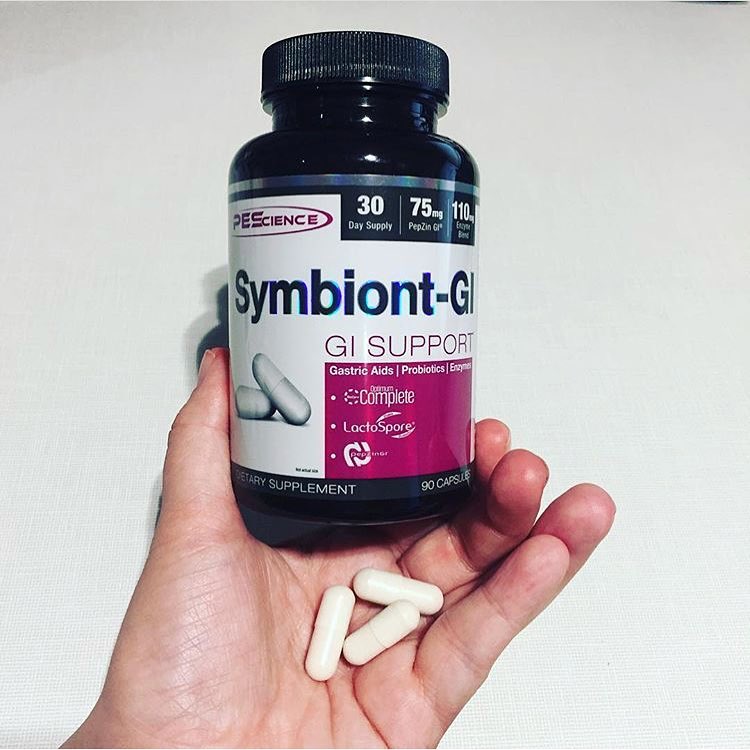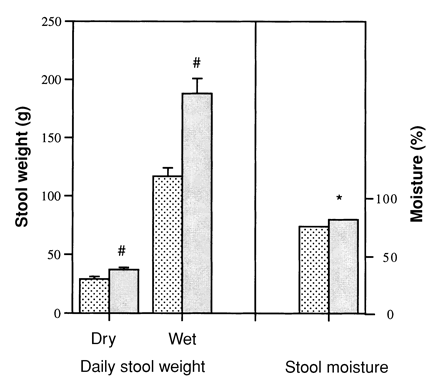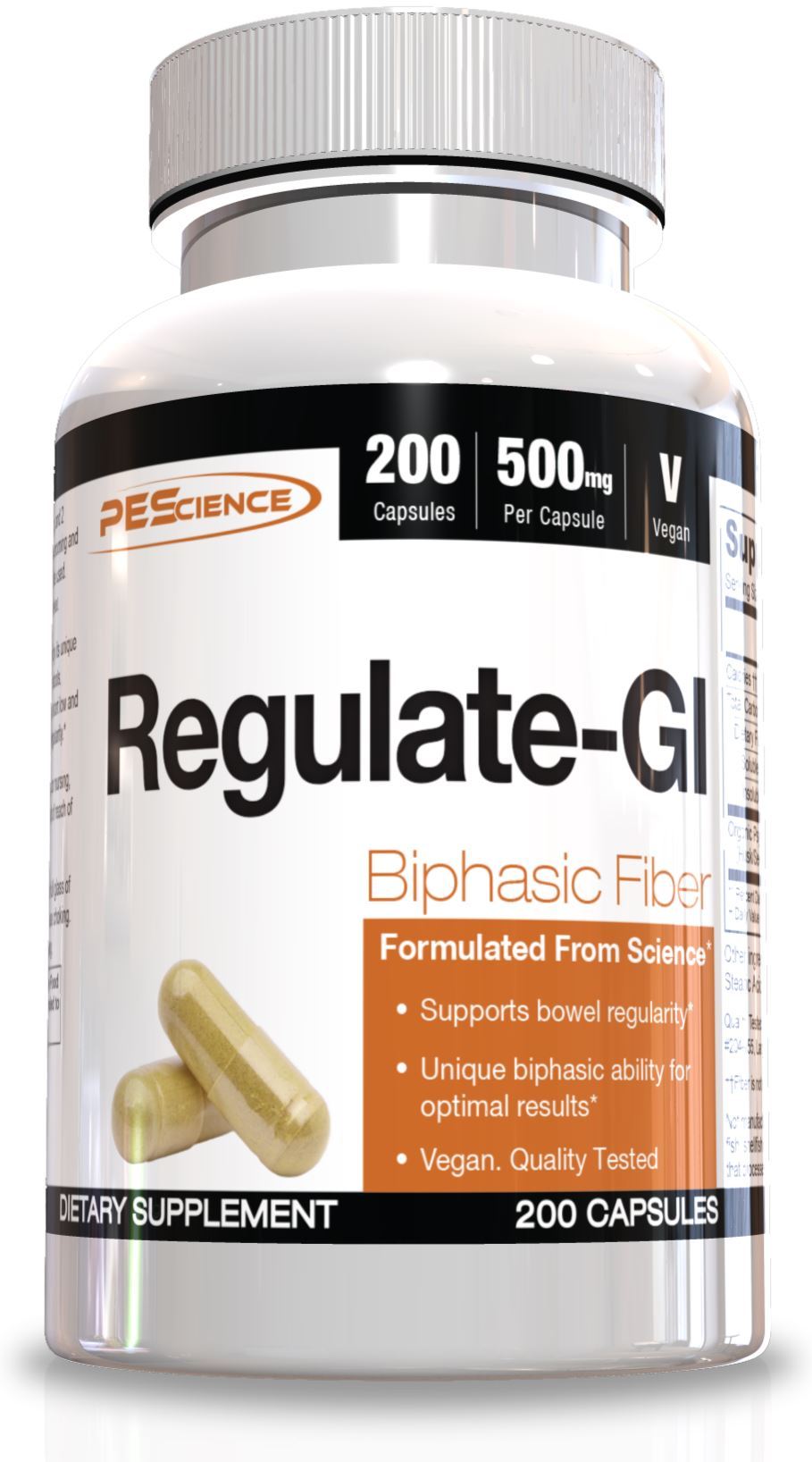In June of 2018, the supplement industry pioneers PEScience released Symbiont-GI, a gut health supplement formulated to achieve symbiosis in your GI tract.
It was an incredible success, with many customers so excited that they emailed and DMd the @PEScience team with some very "TMI" messages. Those who've had gut problems understand, though. Improving digestion, bloat, and other GI tract issues is no minor feat.

Need some extra bulk in your stool to bring some regularity? Add a few caps of Regulate-GI each day and boost it with psyllium husk fiber!
This year, PEScience has released a quick follow-up supplement to add to your Symbiont-GI, a single-ingredient fiber supplement named Regulate-GI.
Regulate-GI: Psyllium Husk Fiber in capsule form!
Regulate-GI contains one ingredient: psyllium husk fiber, which has long been used as a fiber source for dieters who are looking to increase stool size and softness without causing absurd side effects. With psyllium in capsule form, we don't need to worry about it forming a gel in our beverages, and can get the benefits without the nuisance.
We haven't done a deep dipe on psyllium yet on this site, so today we take this opportunity to discuss the research and benefits associated with supplementing this unique fiber. But first, see our PEScience news alerts so that you don't miss out on future PEScience news, content, and deals:
PEScience Regulate GI – Deals and Price Drop Alerts
Get Price Alerts
No spam, no scams.
Disclosure: PricePlow relies on pricing from stores with which we have a business relationship. We work hard to keep pricing current, but you may find a better offer.
Posts are sponsored in part by the retailers and/or brands listed on this page.
This area is reserved for Team PricePlow's upcoming Ingredients video.
Subscribe to our channel and sign up for notifications so you catch it when it goes live!
Regulate-GI Ingredients: Organic Psyllium Husk Powder (Husk/Seed) - 1.5 g
Psyllium Husk Powder is the sole ingredient in Regulate-GI, so this entire article will focus on this unique and scientifically-backed fiber. Each capsule contains 500 milligrams, as the serving size on the label is three capsules.
Psyllium is the name of the fiber found in the Plantago ovata plant, which is also known as Plantago psyllium. This fiber consists of arabinoxylan, a polymer made of arabinose and xylose that human digestive systems do not sufficiently digest.[1] In addition, it is water soluble and forms a gel when mixed with water, yet doesn't ferment or react with the gut's bacteria.[2-4]
-
Works primarily as a bulk laxative: increased stool weight
Psyllium has been used as a bulk laxative since the 1970s,[5] and now has a mountain of research supporting its use for that purpose. This means that it primarily increases stool size and fecal weight[5-8] by combining with water and gas in the small intestine and colon.[9] This leads to softer and easier-to-pass stools,[10-12] but doesn't promote diarrhea (and can actually attenuate it!)[13]
With that primary mechanism and outcome covered, there are some other incredible benefits that psyllium husk fiber supplementation can bring:
-
Reduces Appetite
Larger doses of psyllium husk fiber have been shown to reduce appetite in multiple studies, especially around 3-6 hours after taking it.[14-16] Note that the doses are between 10 and 20 grams of fiber, though, which will be a bit less appealing (but still quite possible) to those talking capsules.
Similarly, a 14 gram dose reduced glucose absorption by 12%.[17]
-
Less Gas
In a very interesting crossover study, researchers hooked intrarectal catheters up to healthy humans, and observed significantly less gas in the subjects who were on 30 grams of psyllium husk per day.[18] This is contrary to other forms of fiber, which generally increase gas (the study continually points out how bran increases flatulence).
-
Reduced blood glucose levels, HbA1c, and lipids
A few different studies have shown reduced blood sugar levels when supplementing with psyllium husk fiber,[17,19,20] with the lowest successful dose being in a study that gave 5 grams three times per day.[19] In that study, every lipid value measured improved, including a reduction of triglycerides with an increase in HDL,[19] indicating better insulin sensitivity.
The study cited in a section above demonstrating reduced glucose absorption showed reduced HbA1c levels as well,[17] as did one with reduced blood sugar levels.[20]

Three capsules of a day for 90 days is the dose behind the LactoSpore research inside of Symbiont-GI, and will keep you at 100% zinc needs!
Mechanistically, these effects seem to occur because psyllium husk fiber can bind to bile acids, forcing the body to produce more bile acids, which in turn uses up some cholesterol.[21] Short-chain fatty acids, which are incredibly helpful, are also produced with the very little fermentation that psyllium undergoes,[21] yielding a net positive result.
Dosage considerations
With these benefits in mind, the biggest question comes down to how many capsules you want to take - it's quite clear that a lot of psyllium can be handled. The benefits of taking capsules here is that you don't need to mix it in liquid and deal with odd gel formations.
However, it's tougher to get the higher doses used in many of the studies cited above unless you're OK with swallowing several capsules.
The official dosages are more specific, having you build up to the fiber:
- Day 1: Take 2 capsules in the morning, and 2 capsules at night
- Day 2 and on: Take 3 capsules in the morning and 3 capsules at night.
Up to 3 capsules, 3 times daily can be used.
-- PEScience Website
Stack with Symbiont-GI!
In addition, PEScience fans looking to improve digestion and gut health are wise to use this alongside Symbiont-GI, which combines to form what the brand calls their Optimal-GI Stack.
Gut Health is critical to your health
It's no longer a secret how important gut health is to your overall health - this drum has been beaten pretty loud lately. On top of the most important action you can take -- removing toxic industrialized processed seed oils that are high in omega-6 polyunsaturated fatty acids (such as soybean oil, corn oil, sunflower oil, safflower oil, canola oil, and cottonseed oil) while limiting refined carbohydrates like sugar -- users have had great success with well-formulated support supplements once the diet is cleared of the industrial waste.
Generally, a supplement like Symbiont-GI is what customers reach for, and it's indeed the most important of the two for the majority of users. However, sometimes the stools still won't soften, or you need a bit more volume to push it through, or you want to take a different route in getting your blood sugar and A1c levels down.
In that case, Regulate-GI is an incredible way to do those jobs, providing psyllium husk fiber in a capsule form - no more messy gel required.
PEScience Regulate GI – Deals and Price Drop Alerts
Get Price Alerts
No spam, no scams.
Disclosure: PricePlow relies on pricing from stores with which we have a business relationship. We work hard to keep pricing current, but you may find a better offer.
Posts are sponsored in part by the retailers and/or brands listed on this page.





Comments and Discussion (Powered by the PricePlow Forum)